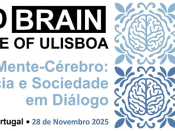Por Maria do Rosário Ramos (Universidade Aberta e CMAFcIO).
The management of non-revenue water (NRW) is one key issue for improving water use efficiency, reducing gaps between water supply and demand.
One of the components of NRW are apparent (commercial) losses, water volumes taken from the network and consumed but not accounted. They are often related to water meter malfunction like under-registration, which is difficult to detect and quantify.
This study was motivated by the challenge proposed by Infraquinta, in the 140th European Study Group with Industry (ESGI140), held in Portugal in June 2018.
The aim was to develop a strategy supported by statistical methods to detect an anomalous decrease in water usage patterns, contributing to meter performance assessment. The basis of the approach is a combination of methods to analyse billed water consumption time series. In the first place, the series is decomposed using Seasonal-Trend decomposition based on Loess. Next, breakpoint analysis is performed on the seasonally adjusted time series. We search for decreasing changes in the periods defined by breakpoints through Mann-Kendall test and Sen’s slope estimator, and an indicator for this change is presented. The strategy is applied to data on water consumption from the Algarve, Portugal.






















